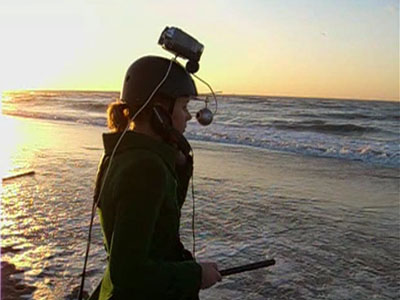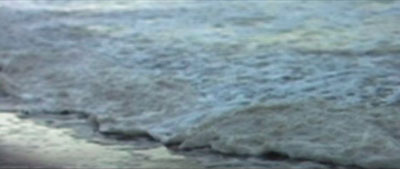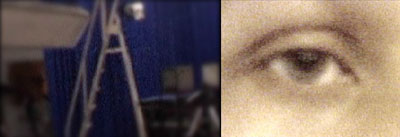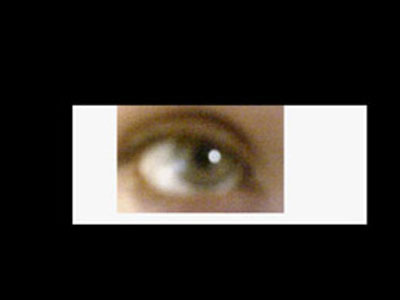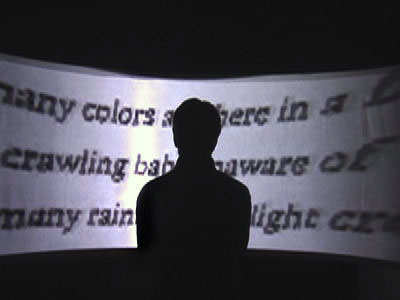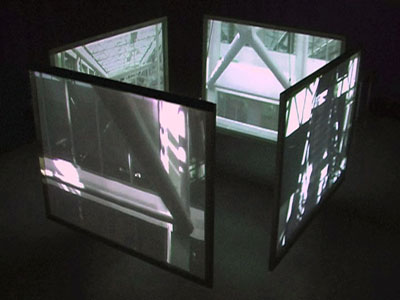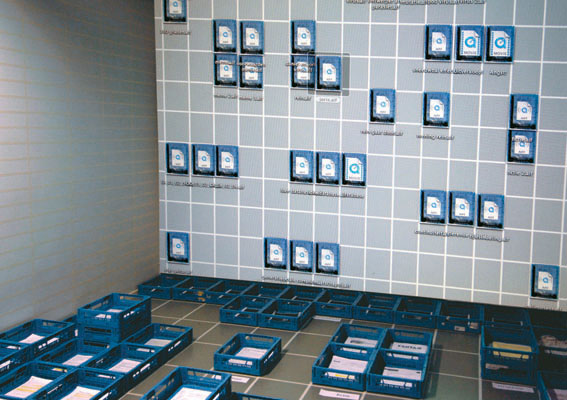|
Researchproject This researchproject originated from an insight in the shortcomings of the camera when it captures the world around us and how we perceive it. The way we capture the world has remained unchanged since the invention of the photocamera. An image deprived of the full possibilities of visual perception has become generally accepted as the only accurate visualization of sight. The problem is that the view provided by the camera is not priviliged and unique. It conforms to the norms of pictorial perspective and imposes them on the cinematic image. It denies the possibility of experiencing a truly individual perception. The possibility of capturing that individual perception has been the aim of my researchproject. And to transform this unique individual perception into a cinematic experience. (Researching the capturing of individual perception does not necessarily lead to a techincal improvement or a realistic translation, but can lead to new insights, new experiences and new imagery.) Short film on Graphic Design Education This short film focusses on the contrast between formal structure and mental chaos at the graphic design department of the ArtEZ Hogeschool voor de Kunsten Arnhem. On one hand, the academy is very structured and organized, in its work environment as well as in its education. On the other hand, there are very dynamic and chaotic emotional developments going on in this clinical atmosphere. Fysical environment and mental processes are in contrast. This is made visible by switching between hi-res black-and-white shots of the surroundings and mobilephone recordings of fellow students, which I shot during my graduation year. By using the mobile phone as a videocamera (with its low resolution), a feeling of real life, close-up and authenticity arises. Contradictory to that are the graphical, overly directed, black-and-white shots, which by the choice of the frame changes the meaning of the image. In this manner technical conventions and limitations are made to convey meaning. Spatial video installation Canto Ostinato, composition for four camera's is a spatial video-installation based on the similarly named musical piece by composer Simeon ten Holt. I was inspired by the repetitional character of the composition and by the performance on four piano's. To record the videomaterial I build a dolly for four camera's in the shape of a cross. Subsequently I strolled that dolly over the brigde inside the ArtEZ School of Dance in Arnhem (a building which in its rhythm is very simular to the work of architect Gerrit Rietveld). By slowly moving the dolly through the building the rhythm changes very subtly, occationaly interrupted by people walking in and out of the frame. Finally the film is presented on four screens positioned in a square. The spectater is able to stand in the centre and experience the environment surrounding him. Researchproject In light of the so-called 'projectmonth' I made a fysical database together with Femke Herregraven, Judith Hoekstra and Enrico Latemia. Our research ended up to be a vast amount of material, better able to show our ideas than any final product. To make this much material insightfull and tangible we decided to make a fysical database. We reshaped a square room into a grid by using tape. This grid could contain over a thousand little blue vegtable boxes, in which we sorted our research. One wall in this room was projected with the same grid, only here to be used for digital (mostly audiovisual) files. As spectator you were able to stand in the midst of stacks of sorted blue boxes containing articles, magazines, books, photographs, short films, audio documents and so on. Experimental short film For State of The Image's 'Experimental Laboratory' I joined a group of artists to embark on a four day lasting project to make a short film without any preconceived idea. Just by choosing a fysical place somewhere in the city, we would have to think of something to create. We also wanted our very differing disciplines (film, sound, opera and dance) to play a part in this creation. The short film that came about was an experiment to combine the place (Rosandepolder, Arnhem) with a musical piece (Schuberts Kennst du das land?) and subsequently to displace the singing by videorecordings and the piano by soundrecordings of that specific place. |
Researchproject
To create an image which visualizes perception, it is necessary to 'reinvent' the way we capture images and to somehow include the way we see. The norms of pictorial capturing have to be changed or at least bent.
By building a so-called 'videohelmet' I was able to simultaneously capture the movement of my eye as well as my environment. In that way I could take into account the effect my eyemovement had on my immediate surroundings. By motiontracking the eyemovement and placing that data on the 'normal' images I was able to very accurately resemble the way we really see, that is, the raw image data that comes through our eyes. This includes 'jumps' of the eye as well as blinking. All in all a very unstable image emerges.
Reinventing the capturing of images alone wouldn't do the trick of experiencing that unique individual perception. It had to be reproduced and made visible in a way that reinforces the feeling of seeing through someone's eyes. This was acceived by building a cilindric see-through projection screen, the size of 4 metres long. By projecting on the back of the screen, the spectator is able to stand close to the screen and have their field of vision fully covered, about 200 degrees.
Spatial video installation
...
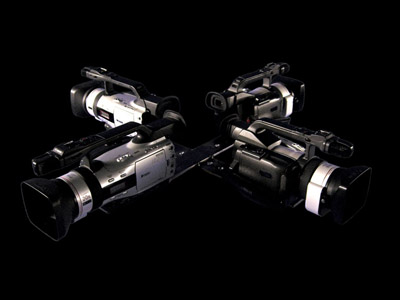
Dolly for four camera's
...

Rhythmic structure of Canto Ostinato
...
